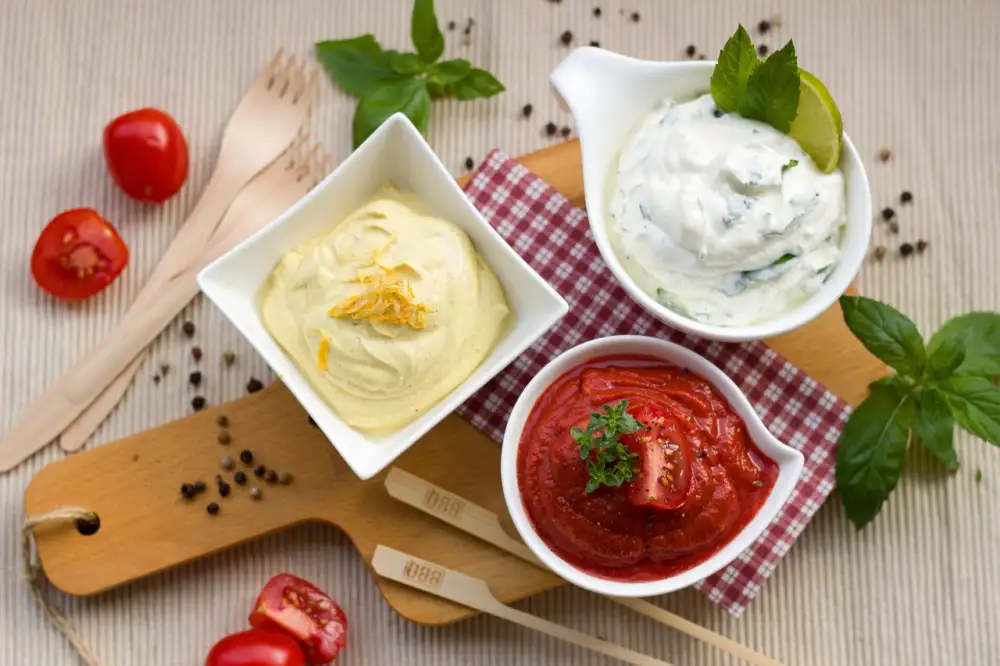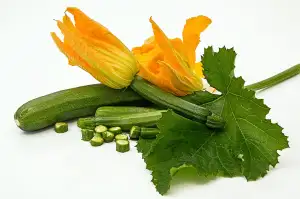Deliciously Tangy: Unleash the Magic of Chutney with Our Exquisite Recipes!

Chutney, a delightful condiment that adds a burst of flavor to any dish, has been tantalizing taste buds for centuries. Originating in the Indian subcontinent, chutney has since spread its culinary magic across the globe. This versatile sauce is made from a delightful blend of fruits, vegetables, herbs, and spices, creating a harmonious balance of sweet, tangy, and spicy flavors. Whether you're looking to add some zing to your sandwiches or enhance the flavors of your curries and meats, chutney is the perfect accompaniment. Get ready to embark on a mouthwatering journey as we explore the world of chutney and unveil its exquisite recipes!
History and Origins of Chutney
Chutney, a tangy and flavorful condiment, has a rich history that dates back centuries. Its origins can be traced to the Indian subcontinent, where it was first created as a way to preserve fruits, vegetables, and spices.
The word "chutney" is derived from the Hindi word "chatni," which means crushed. This refers to the traditional method of making chutney by grinding or crushing ingredients together. The art of making chutney quickly spread throughout India and neighboring countries, each region adding its own unique twist to the recipe.
Chutney gained popularity during British colonial rule in India when it was introduced to the Western world. It soon became a staple in British cuisine, with variations being created using local ingredients such as apples, tomatoes, and mint.
Over time, chutney made its way to other parts of the world through trade routes and migration. In South Africa, for example, chutney became an integral part of Cape Malay cuisine and is often served with curries and samosas.
Today, chutney has become a global sensation with countless variations available worldwide. From sweet mango chutney to spicy tomato chutney, there is a flavor profile to suit every palate.
The history of chutney showcases its versatility and adaptability as it continues to evolve and be embraced by different cultures around the globe.
Popular Varieties of Chutney
Chutney, with its tantalizing flavors and vibrant colors, comes in a variety of forms to suit every palate. Here are some popular types of chutney that will add a burst of flavor to your meals:
1. Mango Chutney: Made from ripe mangoes, this sweet and tangy chutney is a classic favorite. It pairs well with grilled meats, sandwiches, and even cheese.
2. Tomato Chutney: Bursting with the freshness of tomatoes, this chutney is a versatile accompaniment. It can be enjoyed with dosas, idlis, or as a dip for snacks.
3. Coconut Chutney: A staple in South Indian cuisine, coconut chutney is made from grated coconut blended with spices like green chili and ginger. It elevates the taste of dosas, vadas, and uttapams.
4. Mint Chutney: With its refreshing flavor, mint chutney adds zing to any dish. It complements kebabs, samosas, and pakoras perfectly.
5. Tamarind Chutney: This tangy-sweet chutney made from tamarind pulp is an essential component of chaat dishes like pani puri and bhel puri.
6. Onion Chutney: Made by sauteing onions with spices and blending them into a smooth paste, onion chutney enhances the taste of dosas and parathas.
These are just a few examples of the wide range of chutneys available. Each region in India has its own unique variations that reflect local flavors and ingredients. Experimenting with different types of chutneys will surely take your culinary experience to new heights!
Ingredients and Preparation of Chutney
To prepare chutney, you will need a variety of fresh ingredients such as fruits, vegetables, herbs, spices, and vinegar. The specific ingredients will depend on the type of chutney you are making. For example, mango chutney typically includes ripe mangoes, onions, ginger, garlic, chili peppers, vinegar, sugar, and spices like cumin and mustard seeds.
To begin the preparation process, start by peeling and chopping the fruits or vegetables into small pieces. In a saucepan, heat some oil and add in the chopped onions and any other aromatics like ginger or garlic. Sauté them until they become soft and translucent.
Next, add in the chopped fruits or vegetables along with any spices or herbs. Stir well to combine all the flavors. Then pour in the vinegar and sugar to balance out the tanginess and sweetness.
Allow the mixture to simmer over low heat for about 30-40 minutes until it thickens and develops a rich flavor. Stir occasionally to prevent sticking or burning.
Once the chutney reaches your desired consistency (it should be thick but still spreadable), remove it from heat and let it cool completely. Transfer it into sterilized jars for storage.
Remember that chutney flavors develop over time, so it is best to let it sit for at least a day before serving. This allows all the ingredients to meld together harmoniously.
Experiment with different combinations of fruits, vegetables, spices, and herbs to create your own unique chutney recipes. The possibilities are endless!
Step-by-Step Chutney Recipe
1. Gather the ingredients: 2 cups of chopped fruits or vegetables (such as mango, tomato, onion, or apple), 1 cup of sugar, 1 cup of vinegar (apple cider or white), 1 tablespoon of ginger paste, 1 tablespoon of garlic paste, 1 teaspoon of red chili flakes, and salt to taste.
2. In a saucepan, combine the chopped fruits/vegetables, sugar, vinegar, ginger paste, garlic paste, red chili flakes, and salt. Mix well.
3. Place the saucepan on medium heat and bring the mixture to a boil. Stir occasionally to prevent sticking.
4. Once it boils, reduce the heat to low and let it simmer for about 30-40 minutes or until the chutney thickens and reaches a jam-like consistency. Stir occasionally.
5. Taste and adjust the seasoning if needed by adding more sugar or salt according to your preference.
6. Remove from heat and let it cool completely before transferring it to sterilized jars for storage.
7. Store in a cool and dry place for at least a week before consuming to allow flavors to develop fully.
8. Enjoy your homemade chutney with various dishes like sandwiches, grilled meats, cheese platters, or as a dip for snacks!
Remember to experiment with different combinations of fruits/vegetables and spices to create your unique chutney flavors!
Tips and Tricks for Making Perfect Chutney
To make the perfect chutney, here are some tips and tricks to keep in mind. Firstly, choose ripe and flavorful fruits or vegetables for the base of your chutney. This will ensure a rich and vibrant flavor. Secondly, balance the sweetness, tanginess, and spiciness by adjusting the amount of sugar, vinegar, and spices accordingly. Thirdly, finely chop or grate the ingredients to achieve a smooth texture. Fourthly, cook the chutney on low heat to allow the flavors to meld together slowly. Lastly, store your chutney in sterilized jars to maintain its freshness for longer periods. With these tips in mind, you'll be able to create a delicious and well-balanced chutney every time!
Serving Suggestions and Pairings for Chutney
Chutney is a versatile condiment that can elevate the flavors of various dishes. Here are some serving suggestions and pairings to enhance your culinary experience with chutney:
1. Cheese Platter: Serve chutney alongside a selection of cheeses, such as cheddar, brie, or goat cheese. The sweet and tangy flavors of chutney complement the richness of the cheese.
2. Grilled Meats: Brush chutney onto grilled chicken, pork, or lamb for a burst of flavor. It adds a delightful tanginess that cuts through the richness of the meat.
3. Sandwiches and Wraps: Spread chutney on sandwiches or wraps to add an extra layer of flavor. It pairs well with grilled vegetables, roasted turkey, or even ham.
4. Indian Cuisine: Chutneys are an integral part of Indian cuisine. They are traditionally served with samosas, pakoras, dosas, or any other Indian snack or appetizer.
5. Roasted Vegetables: Toss roasted vegetables like carrots, cauliflower, or Brussels sprouts in chutney before serving. It adds a zesty kick and enhances the natural sweetness of the veggies.
6. Salad Dressing: Mix chutney with olive oil and vinegar to create a unique salad dressing. It adds complexity and depth to your salads.
7. Charcuterie Board: Include chutney as one of the condiments on a charcuterie board along with cured meats, pickles, and olives. Its vibrant flavors complement the variety of cured meats.
Remember to experiment with different combinations to discover your favorite pairings! Chutney's versatility makes it an excellent addition to any meal or snack.
Health Benefits of Chutney
Chutney not only adds a burst of flavor to your meals, but it also offers several health benefits. Packed with fresh fruits, vegetables, and spices, chutney is a great source of essential vitamins and minerals. The high antioxidant content in chutney helps boost your immune system and fight against free radicals.
Additionally, chutney can aid in digestion due to the presence of ingredients like ginger and garlic, which have natural digestive properties. The combination of spices used in chutney can also help improve metabolism and promote weight loss.
Moreover, certain varieties of chutney, such as tomato or cranberry chutney, are rich in lycopene—a powerful antioxidant known for its potential cancer-fighting properties. Chutneys made with ingredients like mint or coriander are loaded with vitamins A and C, which are beneficial for skin health and overall well-being.
Including homemade chutney in your diet can be a delicious way to incorporate more fruits and vegetables into your meals while reaping the numerous health benefits they offer. So why not unleash the magic of chutney and elevate your culinary experience?
In conclusion, chutney is a versatile and flavorful condiment that can truly elevate your meals. Whether you prefer the sweet and tangy flavors of mango chutney or the spicy kick of tomato chutney, there is a variety to suit every palate.
By making your own chutney at home, you have the opportunity to experiment with different ingredients and create unique flavor combinations. The process may seem daunting at first, but with our step-by-step recipe and helpful tips, you'll soon be whipping up delicious chutneys like a pro.
Not only does homemade chutney add a burst of flavor to your dishes, but it also offers numerous health benefits. Many traditional chutneys are packed with antioxidants and vitamins from fresh fruits and spices. They can aid digestion, boost immunity, and even help regulate blood sugar levels.
So why settle for store-bought chutneys when you can unleash the magic of homemade ones? With just a few simple ingredients and some creativity in the kitchen, you can take your meals from ordinary to extraordinary.
Whether you serve it alongside your favorite Indian curry or use it as a glaze for grilled meats, chutney adds that extra layer of complexity that will impress your family and friends. So go ahead, unleash the magic of chutney in your kitchen and experience food excellence like never before!
Published: 24. 11. 2023
Category: Recipes



